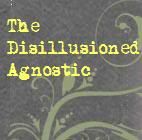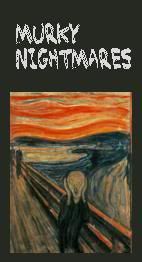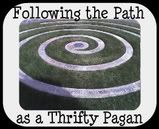The Islamic Holy of Holies
an except from the book The Yoni: Sacred Symbol of the Female Creative Power
 |
| The Goddesses Al'Uzza, Al'Lat, & Menat formed a triad on pre-Islamic Arabia |
 |
| The Goddess's Yoni or the hand of Allah? |
"The Goddess's sacred place, with its life-giving well next to it, attracted pilgrims and worshipers from all over the Arabic peninsula and its neighboring regions. Here, with the sacred black stone as a symbol of her Yone and in an oasis of life-giving waters, the Goddess resided in her aspect of Earth Mother, creatrix of life and helper of women in childbirth. To this image and gocus of energies people came to pray, to ask for offspring and protection, and to celebrate life. It was to this place that the great patriarch Abraham (c. 1900 B.C.E.) came with his wife, Sarah, who was barren for many years. He knowingly chose this place of the Goddess and her fertile powers as the place where he would like with Hagar, the young and beautiful Egyptian slave who was to bear his first son. For millennia the Kaaba was a place of power where men and women worshiped the Goddess in the form of her Yoni.
 |
| The Goddess Al'Lat |
"In 610, after fourteen years of marriage, Muhammad heard a voice speak to him; shortly thereafter he began to preach his newfound creed focusing on Allah and male dominion over nature and women. After twelve years of antagonizing his fellow men and women with his heretical ideas, he was cast out from his tribe, leaving Mecca on June 15, 622, an occasion that marks the first day of the Islamic calendar His teachings fell on receiving ears among the men of Medina and the surrounding vicinity; he returned to Mecca with an army of followers and conquered the city. Apparently tired of having his life ruled by women and goddesses, Muhammad destroyed all "false idols" of the sacred shrines, with the exception of the most holy, the sacred black stone that had once fallen from heaven.
"Such pieces of meteorites that crashed through the atmosphere were regarded as true gifts from heaven, held in the highest esteem everywhere in the Near Eastern and Mediterranean cultures. Above all other things, it was the precence of the sacred black stone that made Mecca the place of power it was at the time.
 |
| Al'Uzza the mother aspect of the triple Goddess |
"There are those who claim that woman and the Goddess never had the exalted status in the Near East that I here state-scientists and scholars who simply cannot and will not admit that there has ever been a matriarchy in earlier human communities, and steadfastly state that goddesses have always played only a minor role in the human communities, and steadfastly state that goddesses have always played only a minor role in their respective pantheons. However, even from within the ranks of patriarchal observers we have witnesses for our case. An open and clear testimony to the fact that in pre-Islamic Arabia both the Goddess and women played a superior role can be found in the following statement by Omar, a faithful desciple of the prophet Muhammad. Omar states, "When we came among the Helpers, they proved to be a people whose women dominated them, and our wives have come to copy the habits of the women of the Ansar."
 |
| Al'Uzza, the full moon or mother aspect |
"In the final analysis, no one except the pilgrims themselves can know what they see and feel when finally arriving at the stone, the Yoni of the Goddess or a Hand of God. Whatever it may be, it is the most exalted aim of the pilgrimage to touch or kiss the black meteorite."
*The name Al'Lat simply means "goddess," similar to calling the Judeo-Christian god Jehovah, the Islamic got Allah, or both simply "God" or "the Lord."
**Sun, Moon, Mercury, Venus, Mars, Jupiter, and Saturn-the planets visible to the unaided human eye
***This is agreed upon by most non-Islamic sounrces. Author M.JH. Vermaseren points out that, grammatically, the name Allah is simply the male version of Al'Lat.
****Helpers is the name of the Ansar tribe of Medina.
Sources:
Rufus C.Camphausen - Inner Traditions - 1996
Full color picture of the Arabian triple goddess is from http://www.thaliatook.com/AMGG/arabtriple.html.
Full color picture of the Arabian triple goddess is from http://www.thaliatook.com/AMGG/arabtriple.html.









